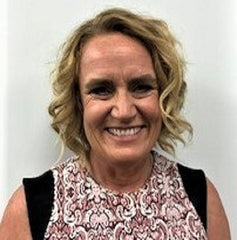How long does it take to recover from a dislocated shoulder?
by Margie Olds

How long does it take to recover from a dislocated shoulder?
The time frame for recovery from a shoulder dislocation is really determined by the damage that is caused during a dislocation. In some case the amount of pathology is minimal. Then return to sport can happen within a few weeks. To learn more about the damage that can occur when a shoulder is dislocated, check out our blog here.
Typically, if there is minimal damage to the shoulder, a person can return to sport within a few weeks. This is usually how long it takes for the swelling to settle and for them to regain range of motion and strength. It is not advised that people return to sport if they have limited range of movement in their shoulder, or if there is pain with movement, or tension on the tendons.
There are two main types of shoulder dislocations that occur during sport. The most common type of shoulder dislocation that occurs in sport is an anterior shoulder dislocation. It is called an anterior shoulder dislocation, because the arm bone twists forward and 'pops out' the front of the shoulder. This occurs when the arm is away from the body and the hand is twisted upwards. The arm is either over rotated (i.e. too much twisting) or it is overstretched backwards, resulting in the shoulder popping out of the front of the joint. Shoulder braces are one way of managing anterior dislocations. The Flawless Motion Anterior Shoulder Brace (click here for more info) supports people with an anterior shoulder dislocation, by allowing them to return to sport, but limiting the shoulder from moving into that vulnerable position with their arm over-rotated or over extended. Click here to learn more about the Flawless Motion Anterior shoulder braces (available for both men and women)
The second type of shoulder dislocation is a posterior shoulder dislocation. This occurs when somebody falls forward and puts them arm out to stop their fall. If the arm is in from of the body, and the hand twisted in, then it can put pressure on the back of the shoulder joint causing a posterior shoulder dislocation. The tissue at the back of the shoulder requires more force to dislocate the shoulder, and so these types of injuries are more uncommon than anterior shoulder dislocation. The shoulder brace that can protect people after a posterior shoulder dislocation is the multi-directional shoulder brace.
The straps for a multi-directional shoulder brace can be configured differently to provide more support at the back of the shoulder, thus limiting range of motion and protecting the joint from further injury.

Dr Margie Olds is a internationally renowned physiotherapist with a special interest in shoulder injuries. She developed the Flawless Motion braces to help people get back into sport as quickly and safely as possible. Her PhD is on predicting shoulder dislocations after injury. This research involved calling over 700 people throughout New Zealand who had a shoulder dislocation to find out what makes some people more likely to have ongoing shoulder problems, and why some people can have a shoulder dislocation, and go back to sport with no further problems. For more information on Margie's PhD, read here.







